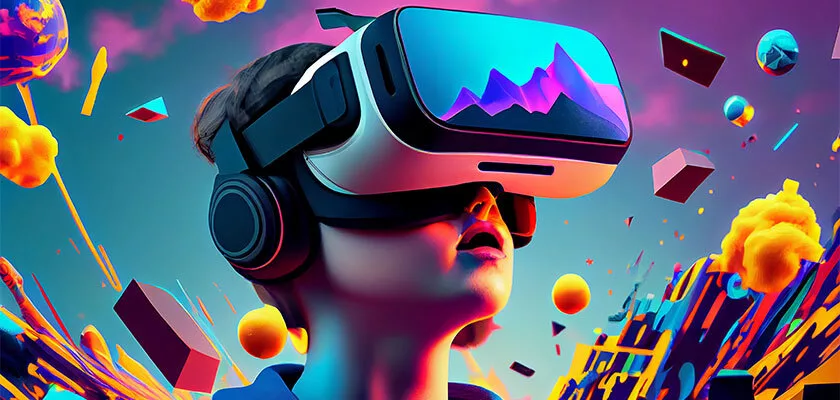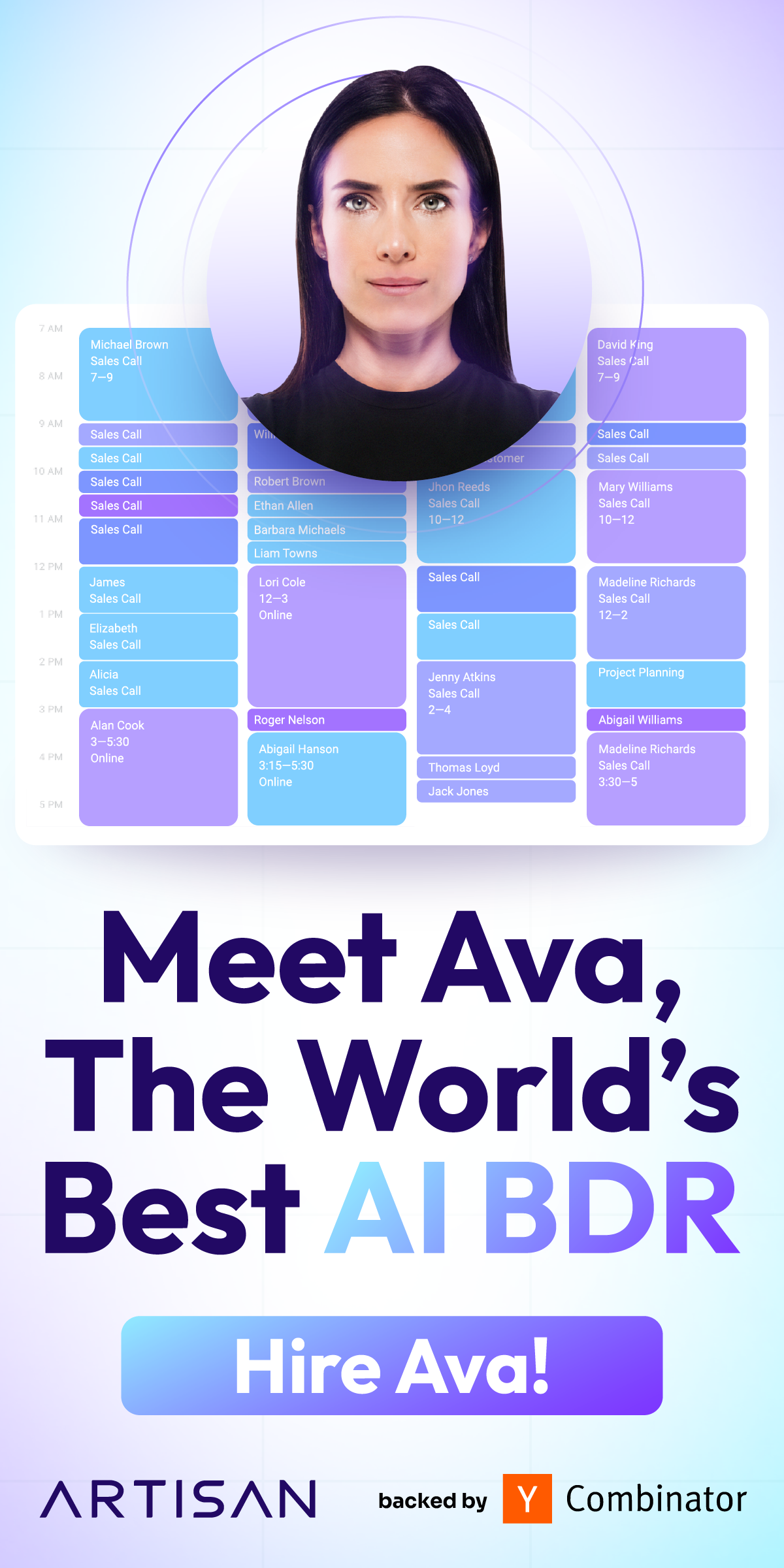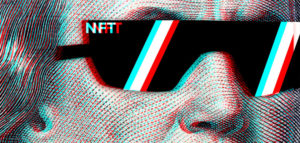
How Will AR / VR Headsets Affect Media & Entertainment Industry
As innovations in technology advance, we often find ourselves wondering: Is virtual reality going to be important in entertainment? And the answer is a big YES.
Augmented reality and virtual reality are two of the most exciting new technologies in recent years. They have the potential to revolutionize the way we interact with the world around us, and the media and entertainment industry is definitely no exception.
These technologies are reshaping the way we consume content, creating new avenues for storytelling, and providing unparalleled experiences for audiences. In this article, we explore the transformative impact of AR/VR headsets on the media and entertainment landscape. Let’s get started!
What is AR and VR Technology?
AR technology overlays digital information in the real world, while VR creates a completely immersive virtual world. Both of these technologies are still in their early stages of development; however, AR/VR has the power to fundamentally alter how we engage with the digital world. While VR is used to create immersive and captivating experiences, AR can be used to instantly convey information and context.
What Future Changes Will AR/VR Technology Bring?
In recent years, the rapid advancements in augmented reality and virtual reality technology have sparked a revolution in the media and entertainment industry. AR/VR headsets once considered futuristic concepts, are now becoming increasingly accessible and are poised to shape the future of how we consume and engage with all types of content. Let’s explore how AR/VR headsets might affect the entertainment and media industry, emphasizing their transformational potential and emerging trends that will likely redefine the industry in the years to come.
Enhanced Immersive Experiences
With AR and VR, users can have incredibly lifelike experiences that give them the impression that they are actually inside the content. For instance, virtual reality concerts let customers watch the event from the comfort of their own homes, and augmented reality games allow players to engage more directly with the virtual environment.
AR/VR headsets offer an unprecedented level of immersion, allowing users to step into virtual worlds or overlay digital content onto the real world. In the realm of media and entertainment, this means viewers can experience movies, TV shows, concerts, and live events as if they were physically present. Whether it’s sitting courtside at a basketball game or exploring distant planets, AR/VR headsets provide an immersive experience that transcends traditional screens, enhancing engagement and emotional connection.
The capability opens up a plethora of possibilities for the media and entertainment industry. From immersive gaming experiences to interactive storytelling, AR/VR headsets enable consumers to be active participants rather than passive spectators. As these technologies continue to evolve, we can expect a surge in demand for AR/VR-enabled content across various entertainment platforms.
New Forms of Content
Augmented reality and virtual reality can be used to create new forms of entertainment that were not possible before. AR/VR headsets will bring a new level of excitement and interactivity to live events and performances.
At the Guns N’ Roses concert in Bogota, Colombia, Johnnie Walker and Diageo collaborated with Aircards to design an AR light show experience to provide fans with a unique brand experience.
Augmented reality overlays can enhance live concerts, sports events, and theatrical performances by offering real-time information, immersive visual effects, and personalized experiences to the audience. With AR-enabled headsets, attendees can engage with virtual elements, interact with performers, and customize their viewing experience, elevating the overall entertainment value.
A New Era of Advertising
AR/VR headsets have introduced exciting possibilities for advertisers and marketers as well. With the ability to overlay digital content onto the real world, AR/VR headsets enable immersive and interactive advertising experiences. Brands can now integrate AR/VR into their digital marketing strategy, create virtual showrooms, allow users to try products virtually, or offer personalized and targeted advertisements based on user preferences and location. These developments open up new avenues for engagement and enable advertisers to deliver more impactful and memorable campaigns. To stay competitive in the industry, media and entertainment marketing agencies need to continuously monitor these developments and promptly adapt to the changing marketing landscape.
By enabling users to interact with advertising in a more personal way, AR and VR may enhance user engagement. Users will be able to see a new car in their own driveway thanks to augmented reality advertising. Sounds intriguing, no?
How the Media and Entertainment Industry is Using AR and VR Now
Gaming
The most common form of entertainment that people enjoy during their free time is probably gaming. In fact, many people today make a living off of their passion for gaming thanks to the advancements in technology over the past several decades. Thus, the widespread use of AR and VR can be very exciting, especially for the gaming industry. For now, AR and VR are being used to create new and immersive gaming experiences. To give an example, the game “Pokemon Go” uses augmented reality to allow players to catch Pokemon in the real world. This means that you can see Pokémon appear in your surroundings as if they were actually there. In fact, according to Fernando Gomez, professor of virtual reality and augmented reality at IED Madrid, believes that these types of applications are fundamental for bringing new technologies to the general public.
The gaming industry has been quick to embrace AR/VR headsets, transforming the way games are played and experienced. These headsets transport players into virtual worlds, where they can interact with characters and objects, bringing an unprecedented level of realism and interactivity. Moreover, multiplayer experiences in virtual reality can bridge the gap between physical and digital social interactions, providing users with an engaging social gaming experience. From immersive storytelling adventures to competitive multiplayer experiences, AR/VR headsets have opened up new frontiers in gaming, attracting a growing audience and sparking innovation in game design.
Virtual Cinemas and Theater Experiences
The way we enjoy theatrical performances and view movies could be completely changed by AR/VR headsets. A customized movie-watching experience is provided by virtual theaters, where customers can select their desired setting, and seating, and even participate in online watching with friends. According to mixed-news, Apple’s new release of AR/VR headset, Apple Vision Pro, will include a cinema feature enabling users to project movies and TV shows onto a giant virtual screen. Disney+ is another streaming option that Apple Vision Pro users have access to in addition to Apple TV+.
Similar to how consumers may watch live performances from the comfort of their homes thanks to virtual theater experiences, these experiences open up access to cultural events by removing geographic limitations.
Film and Television
For more than a century, the film industry has been a significant source of entertainment for people all over the world and it is the next field that is actively seeking methods to adapt and apply virtual reality concepts and technology. With virtual reality, viewers can become active participants in the narrative, experiencing the story from different angles. Furthermore, filmmakers can leverage AR technology to overlay additional information or visual effects onto the real-world environment, enhancing the viewer experience. This fusion of the physical and digital realms paves the way for innovative storytelling techniques and new possibilities for filmmakers and content creators.
Additionally, intriguing and compelling advertising opportunities for the movie can be created using virtual reality. This may include engaging movie trailers or other enticing marketing materials for the upcoming film.
Sports
The sports industry have significantly impacted by augmented reality and virtual reality technology, revolutionizing the way fans engage with their favorite sports and transforming the overall viewing experience. Virtual reality headsets enable fans to feel like they’re physically present at a game, providing a 360-degree view of the action. This enhances the engagement and emotional connection between fans and their favorite sports teams. With the help of VR headsets, viewers can experience the excitement of being in the stadium, even if they are geographically distant. This opens up new avenues for remote viewing and expands the fan base beyond local boundaries.
Real-time data, player profiles, and interactive components can be provided using augmented reality overlays to improve the viewing experience. Fans can analyze critical points in the game more efficiently by viewing virtual replays from various angles and views.
Trigger XR created an augmented reality (AR) event for the 2022 Super Bowl Halftime Show in partnership with Pepsi and Verizon that would allow viewers to virtually visit SoFi Stadium in Los Angeles to see live performances by artists including Snoop Dogg, Eminem, and others.
Remaining Challenges AR/VR Face
While AR/VR headsets hold great promise for the media and entertainment industry, several challenges remain. High costs, limited content availability, and the need for user-friendly interfaces are some of the hurdles that need to be overcome for the widespread adoption of AR/VR. The headsets are still relatively bulky and heavy, and they can be uncomfortable to wear for extended periods of time. The technology is also power-hungry, which limits the battery life of the headsets. Let’s assume the outer design has become utilitarian. Then other challenges arise, such as software limitations or basically the adaptation challenges of this new technology. High-quality AR/VR content is still not widely accessible. This is mostly because the technology is still in its early stages and because creating content for AR and VR is more difficult and expensive than creating traditional content. As a result, many people are hesitant to adopt cutting-edge technologies. Naturally, the expensive price of the headsets and lack of high-quality content make persuading people to use AR/VR technology much more challenging.
However, as technology advances and becomes more accessible, these challenges are likely to diminish, paving the way for an immersive future.
Conclusion
From revolutionizing gaming experiences to transforming film and television and enhancing live events, AR/VR headsets are reshaping how we consume and engage with content. As technology continues to evolve and become more accessible, we can expect a future where AR/VR headsets are integrated into our everyday lives, providing rich and quality experiences and unlocking endless possibilities for content creators and consumers alike. Thus, their transformative impact on the media and entertainment industry is undeniable.
The future of the media and entertainment industry is on the cusp of a virtual revolution, and AR/VR headsets are at the forefront of this transformative wave.























